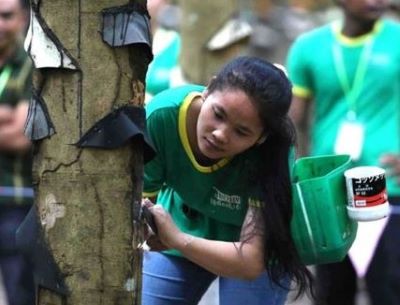
Vietnamese rubber producers, a crucial link in the global rubber supply chain are facing challenges as over 60% of raw rubber originates from smallholder farmers who fail to meet the EU Deforestation Regulation (EUDR).
Rubber is among the seven commodities regulated under the EUDR. According to this regulation, rubber products are prohibited from entering the EU market if their production contributes to deforestation, forest degradation, or involves supply chain activities that violate the laws of the producing country.
The EUDR will be officially applied from December 30, 2025 to large importers into the EU, and from June 30, 2026 to small and medium sized importers.
According to statistics, Vietnam's rubber cultivation area in 2024 totaled approximately 910,000 hectares, with 80% in latex tapping age, providing around 1.3 million tons of dry rubber equivalent. Of this, 488,000 hectares are managed by 264,000 smallholder households, supplying 819,000 tons or 54% of total area and 63% of national output.
Vietnam currently exports rubber products to 180 countries and territories. While the country's rubber export markets are diverse, the three largest markets in 2024 were China (30.3%), the U.S. (18.6%), the EU (7.4%), and other markets (43.7%).
Export turnover has been on the rise, from $5.5 billion in 2020 to nearly $8.5 billion in 2024, including both natural rubber and rubber products.
A joint report by Forest Trends and the Vietnam Rubber Association (VRA) indicates that Vietnam's smallholder rubber supply chain faces major challenges, including a lack of traceability systems throughout the chain, absence of foundational data (land coordinates and boundaries), and disruption in transaction records and communication between supply chain stages, especially between households and collection agents or among agents themselves.
Other challenges are informal agents operating without business registration, inadequate transaction records maintained by agents, and small and medium enterprises (SMEs) lacking tools and resources to manage input materials.
"These issues are widespread in today's smallholder supply chains. Given their prevalence, most current supply chains involving smallholders cannot meet the EUDR", noted To Xuan Phuc, a Forest Trends expert.